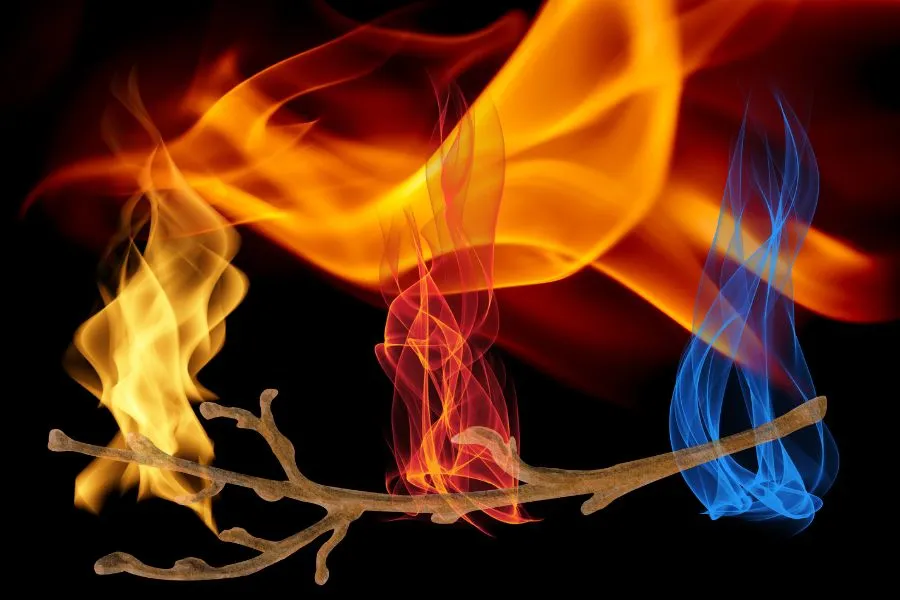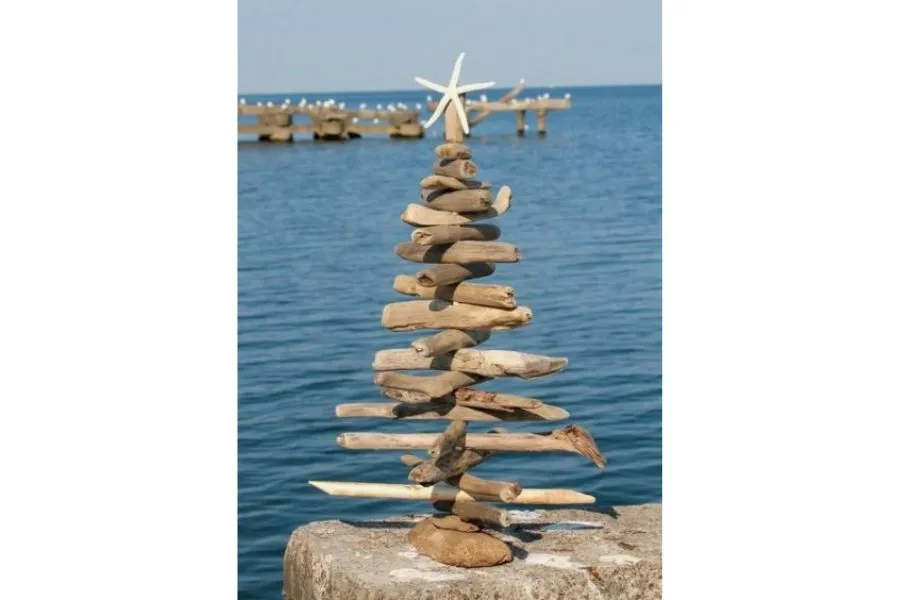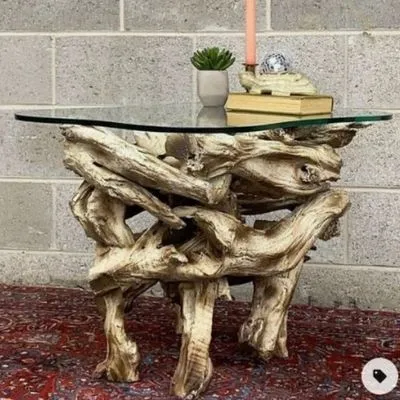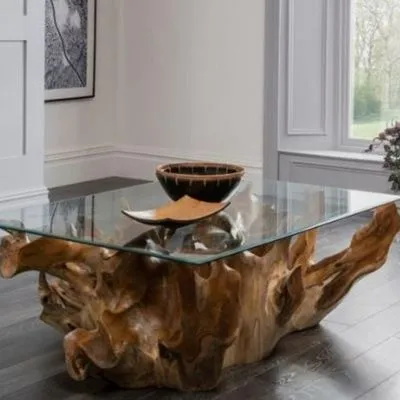Suppose you might be camping and require some firewood. You discovered a pile of driftwood, so you happily brought some back to be burned up. You, however, noticed that the fire burns blue. Why does driftwood burn blue?
In general, driftwood burns blue because of the metal salts inside the wood. These metal salts produce a blue and lavender hue when burned. This is more likely with driftwood from the sea than those found from lakes or river shores. However, burning this wood is bad, as they release dioxins, which can cause cancer.

This article discusses driftwood and why they burn blue. We also discuss where you can find driftwood and if it is a good idea to burn them.
Where Can You Find Driftwood?
You may find driftwood on the shores of the sea, lake, or river. These driftwood wash to the shores after floating around for some time. Driftwood does have a tendency to gather up together in large piles, making it capable of becoming a great habitat for birds and marine life.
Driftwood is wood that has been washed up on the shore or beach of a sea, lake, or river by the wind, tides, or waves. A large percentage of driftwood is made up of pieces or whole trees that were washed into the ocean by flooding, strong winds, other natural events, or logging.

Perhaps due to currents, driftwood tends to wash onto the shores at a similar location, making them tend to group and form a large pile. At times, driftwood can be a nuisance in certain areas. Still, driftwood piles also ended up becoming a good habitat for birds and marine life.
If you are looking for driftwood, your best bet is to take a walk along shorelines and notice if there are any.
When picking driftwood, do exercise some caution. This is because, depending on the origin, driftwood may present some danger. If the driftwood is lumber, it could have rusty or rotten nails. These could injure you and can cause tetanus infection.
Some driftwood piles may also become nests for animals, meaning if you are to go collect some, you may end up disturbing some rats, birds, or, worse, snakes.
Why Does Driftwood Burn Blue?
Driftwood burns blue because of the metal salts inside it. When these metal salts are burned, they produce flames with a blue or lavender-like color. This phenomenon is more pronounced in driftwood from the sea than in lakes or rivers.
When a piece of driftwood washes ashore, it could mean that it had been floating around for a long time in the sea.
As it spends time on the sea, the sun expands the wood, making it very likely for seawater to enter the wood. As seawater is salty, some of this salt may have also deposited itself into the driftwood.
Aside from the common sea salt, many metal salts may also be in the wood. Metal salts are chemical compounds that are not to be confused with sea salt. Some examples of metal sales include copper sulfate, copper oxide, and potassium chloride.

These metal salts, when burned, may produce flames of different colors. This means when you burn your driftwood, you may end up seeing different colors. The blue color from your driftwood is likely from copper oxide or copper sulfate, as these produce a blue flame when burned.
Does Driftwood Burn Well?
Driftwood may or may not burn well, depending on the moisture content present in the wood. Driftwood also may release a lot of dioxins when burned. You may not want to be close to the fire when it burns. This is because dioxins are a known cancer-causing agent, dangerous to human health.
Driftwood may be an unknown quantity when it comes to if they burn well or not. This is because most driftwood may have spent considerable amounts of time in the sea, meaning they would have a higher degree of moisture than regular dry wood.

As such, if you intend to burn driftwood to make a fire, you may want to ensure that the wood is dry. Identifying dry driftwood is similar to looking for dry woods in forests and jungles- dried driftwood tends to be brittle and dull looking in color.
Another way to test is by banging them together. If they make a loud ringing sound, they are likely dry.
When burning driftwood, you may want to be far away from the fire, as driftwood is usually full of metal salts. When burned, these metal salts may release unknown chemicals. Some of these chemicals include dioxins, a well-known carcinogen. Carcinogens refer to agents or compounds known to cause cancer.
This is perhaps why the US Environmental Protection Agency (EPA) advises the public not to burn driftwood.
This means if you intend to start a campfire to keep warm at night, driftwood may be a bad idea since you may be close to it, and as a result, you may be breathing in many of these chemicals as it burns.
What Can You Do With Driftwood Instead?
You can use driftwood for art, decoration inside your fish tank, furniture, or collect them. Certain types of driftwood are well sought after by collectors. You can also simply leave them piled up where they are. Driftwood piles make great habitats for birds, animals, and marine life.
Now that we know that burning driftwood is bad, what can we do with driftwood instead? There are many things you can do with driftwood, including:
Arts and decorations: As driftwood ages, they also tend to rot and break down, making the wood look more ‘artistic’ than normal pieces of wood. Some artists enjoy taking up pieces of driftwood and further carving into them to make pieces of art.
You can read How to prepare Driftwood For Macrame for more information.
If you search on Etsy for ‘driftwood sculpture,’ you may find many pieces of driftwood sculpted into great pieces of art.
Some also like to place driftwoods into fish aquariums or reptile terrariums. However, before you add a piece of driftwood into your aquarium or terrarium, ensure that you have thoroughly cleaned the wood. This avoids pollution, which may be harmful to the animals inside.
Furniture: Some driftwood may be turned into furniture, provided they are still structurally sound. Driftwood can easily be turned into great tables, chairs, and many more.
One common practice is to take many driftwood sticks and then randomly glue them together to form a stable base. Then a piece of glass is cut and placed on top of the wood to form a nice table.
Collecting: Certain types of driftwood are surprisingly well sought after by collectors. Yes, there is such a thing as driftwood collecting. For example, pieces of driftwoods from tree breeds such as Cengal (Malaysian) or Mopani (South African) are well priced. Some collectors also collect driftwood with pattern designs that appeal to them.

Leave Them As They Are: Driftwood piles can be an eyesore to some. However, they may have their use. First, it can be a great habitat to support birds, marine life, and animals as well. Birds may be able to rest on it, and animals may be able to nest in them.
Driftwood piles may also help stop the erosion of shorelines, as they can help to break the sea waves, disturbing their natural flow. This may help to prevent the sea from pulling some sand into the sea as it retreats.





